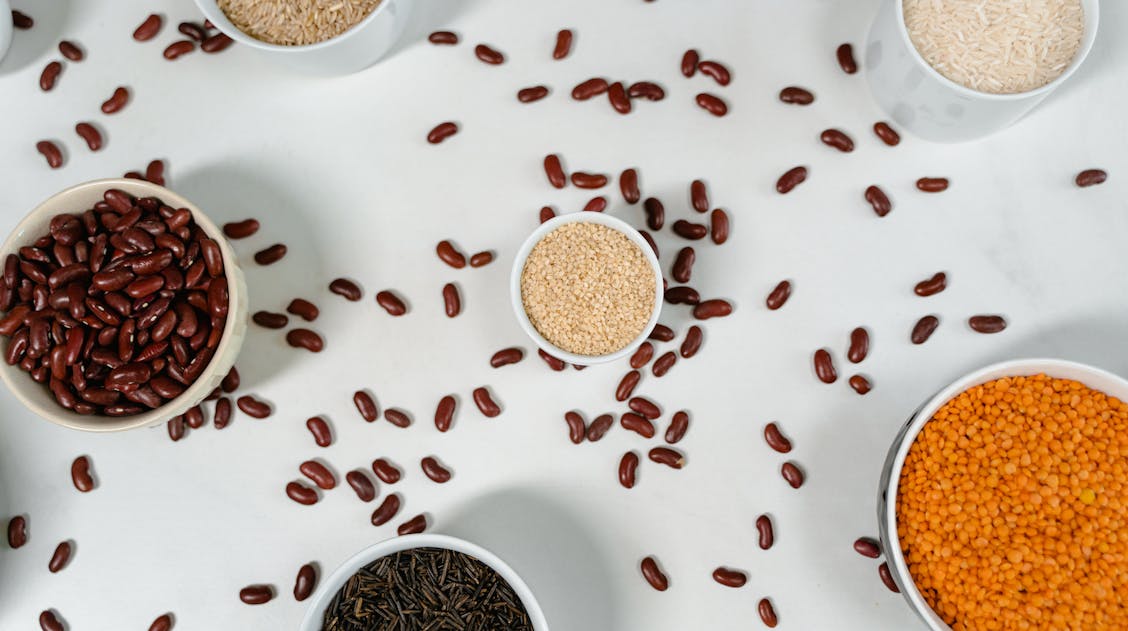
Fermentation of Pulses for Treating Diabetes
Diabetes incidence rates continue to rise rapidly all over the world.
According to the World Health Organisation (WHO), the number of people living with diabetes rose from approximately 200 million in 1990 to 830 million in 2022.
Diabetes mellitus can lead to a range of serious health problems, including blindness, kidney failure, and cardiovascular disease and lower-limb amputation. However, the condition can be managed through appropriate medical treatment, and by adopting healthy lifestyle habits such as a eating a balanced diet, engaging in regular physical activity, maintaining a healthy body weight and avoiding tobacco use.
Plant-based diets with pulses have been demonstrated to increase fibre, protein and mineral intake while reducing unhealthy fats. In particular, fermented pulses have been shown to offer antioxidants and antidiabetic properties.
Researchers from the US who recently published a study in the Open Access journal Antioxidants, which aimed to optimise the fermentation conditions of a variety of pulses to enhance their antioxidant and anti-diabetic potential.
Diabetes management
Diabetes is a chronic disease, and it is broadly classified into two main types: Type 1 and Type 2.
Type 1 diabetes occurs when the pancreas cannot produce insulin, causing hyperglycaemia, an excess of glucose in the blood. While the exact cause of type 1 diabetes is unknown, it is suggested that genetic and environmental factors are implicated.
Type 2 diabetes is caused by the pancreas not producing enough insulin or the body’s inability to effectively use insulin, known as insulin resistance, resulting in hyperglycaemia. Over time, insulin resistance can progress to insulin tolerance, diminishing the hormone’s effectiveness. The cause of type 2 diabetes has been linked to poor dietary habits, sedentary lifestyle, and genetic predisposition, with obesity being a high-risk factor.
Fermented pulses reduce the risk of diabetes.
Pulses are a category of legumes, a group of plants in the Fabaceae (or Leguminosae) family categorised by their pods, which contain seeds; they are the edible dried seeds of legume plants. Legumes and pulses are superfoods, rich in nutritional value. They are excellent sources of protein, fibre and a range of vitamins and minerals, as well as being low in fat. Moreover, pulses and legumes have an antidiabetic effect as they have a low glycaemic index (GI).
The Glycaemic index (GI) is a ranking system for carbohydrate-containing foods used to categorise their impact on blood glucose levels. For example, high-GI foods, such as white bread, white rice, potatoes, and sugary drinks, are digested and absorbed quickly, often causing immediate effects such as glucose spikes followed by rapid declines, causing fatigue. Frequent consumption of these foods can lead to an increased risk of type 2 diabetes. Conversely, consuming low-GI foods like legumes and pulses helps to regulate blood sugar as they are digested and absorbed at a slower rate, reducing the likelihood of hyperglycaemic episodes.
Pulses are also a valuable source of high-quality proteins containing essential amino acids such as lysine and leucine. These proteins support a range of cellular functions, including antioxidant activity. This helps reduce oxidative stress, maintain metabolic balance, and protect pancreatic β-cells, key for the prevention and management of type 2 diabetes. Given their rich nutritional profile, legumes and pulses are being increasingly recommended as part of plant-based diets, particularly for those individuals living with diabetes or at risk of developing the condition.
“Up to 70% of the protein demands of the global population are met by plant-based foods. Products like legumes, pulses and cereals are gaining increasing attention as an alternative to animal-based proteins. And the U.S. Department of Agriculture’s Dietary Guidelines for Americans 2020-2025 suggest the consumption of beans, peas, chickpeas and lentils as part of a healthy diet.” – Dr Elvira Gonzalez de Mejia, author of the study.
Using fermentation to increase pulses nutritional value
To further enhance the nutritional value of pulses, researchers from the US investigated how fermentation could increase their antioxidant and antidiabetic effects.
Fermentation is a form of anaerobic respiration, a metabolic process where microorganisms break down carbohydrates into acids, gases and alcohol. It is an economical, energy-efficient process that can be used to increase nutrients by producing bioactive compounds and improving food digestibility by reducing antinutritional factors. Moreover, fermentation produces bioactive peptides which regulate glucose metabolism.
The researchers used the probiotic strain containing Lactiplantibacillus plantarum 299v (Lp299v) to ferment a range of pulses, including black beans, black-eyed peas, green split peas, red lentils and pinto bean flours. Lp299v has demonstrated gut health benefits, including reducing inflammation, boosting immunity, and enhancing iron absorption.
Graduate student Andrea Jimena Valdés-Alvarado, co- author of the study, explains:
“After fermentation, it remains in the digestive process. It will not only preserve the fermented product that you’re consuming, but it will also produce these peptides or amino acids that are more easily absorbed than the intact protein in the pulses.”
The pulses were first ground and suspended in water. Then they were hydrolysed with α-amylase to reduce viscosity, an enzyme that breaks down starch into glucose. This process improves the texture and facilitates the fermentation. The pulse homogenate was pasteurised in a water bath at 80°C for 1 minute to reduce native microorganisms.
After that, the homogenate was diluted to concentrations of 3% and 9% and cooled it to 37°C for 24 hours to prevent thermal stress of the LP299v strain, which could compromise the results. Following this, the homogenate was inoculated with LP299v and fermented for varied times; 8, 16 or 24 hours.
They then extracted and evaluated the soluble compounds using a series of analyses, including, antioxidant assays based on 2,2-diphenyl-1-picrylhydrazyl (DPPH) and nitric oxide (NO) scavenging capacity, protein and peptide profile quantification, and in-vitro assays to assess the inhibitory potential of diabetes-related enzymes.
Fermentation can optimise pulses nutritional value
The researchers identified that each sample’s scavenging efficiency, which plays an important role in bodily processes such as blood circulation and controlling inflammation, increased by 57–83%. Moreover, they also identified that fermentation increases the soluble protein content by 40-70% in all samples.
In particular, they found that red lentils and green split peas exhibited the greatest improvements in antioxidant scavenging activity and protein solubility.
Dr Elvira Gonzalez de Mejia explains, “They also showed the greatest modulation of two enzymes that improve insulin metabolism.”
Notably, this study showed that fermentation inhibited dipeptidyl peptidase-IV, an enzyme involved in a variety of biological processes, including glucose metabolism. The inhibition of this enzyme is an important pharmacokinetic pathway for type 2 diabetes medication, increasing the levels of specific hormones that help to regulate blood sugar.
Importantly, fermentation significantly inhibited the activity of α-glucosidase, an enzyme responsible for breaking down complex carbohydrates. The inhibition of this enzyme can slow carbohydrate digestion and absorption, helping to regulate blood sugar levels.
“These findings are important and have the potential for informing continued work on fermentation and strategies for improving the functional properties of health-promoting foods. These pulses contain between 18% and 25% good-quality proteins that can be used alone or as ingredients in other food products. We need to find adequate processing conditions and motivate the food industry to use them in dairy beverages or meat substitutes.” – Dr Elvira Gonzalez de Mejia
This research highlights the potential of fermentation as a strategy for improving the functional properties of pulses, supporting their development as functional food ingredients with health-promoting attributes.
If you want to read more articles on this subject or would like to submit research in this area, please see the Antioxidants Special Issue: Antioxidants from Sustainable Food Sources.










